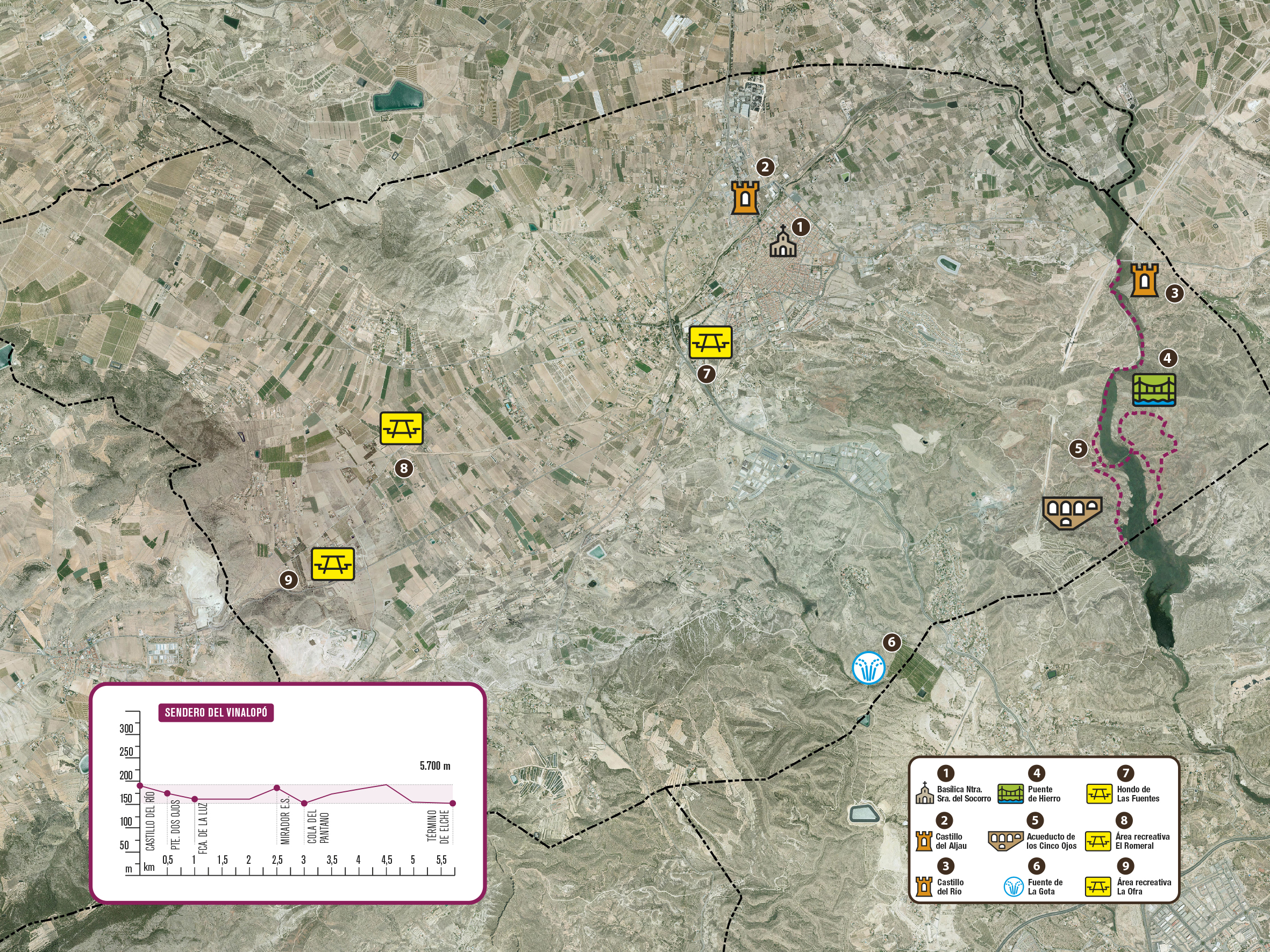TIME
1h. 32 min.
TRAIL TYPE
Walking
DIFFICULTY
Low
DISTANCE
5700 metros
This non-approved trail allows visitors to cross Los Algezares natural site by following Vinalopo river course. We shall begin our route at Puente de Hierro track going southwards, from where we can observe the ruins of 13th century Castillo del Rio castle on the opposite side. Following, we will find Barranco de la Coca ravine, where the 18th century Puente de los Dos Ojos bridge is the most particular element. We continue our trail amid conglomerate, a typical material in a riverside area such as this one, to reach the ruins of Molino del Coquero, one of the old local flour mills.
Our itinerary then continues towards the car park. Here we will find the old Molino de Caraseta facilities, subsequently transformed into a modest hydroelectric station known as Fabrica de la Luz (1895). A short ascent will lead us to a section where the river runs encased between Sierra Carbonera mountains and El Volao, with the latter representing a considerable slope. At this point, we can see the riverbed infrastructures that are part of a diversion to send irrigation water towards Elche. Puente de Hierro, a bridge that disappeared after a heavy flood, is perhaps the most emblematic element in this area.
Our route heads through a wider space running very close to the river where we can observe a succession of undulated terrains on the west, while on the east we find Sierra del Tabaya, an elevation that extends over the eastern corner of this protected area. A concrete ramp allows access to an elevated point with two viewpoints where visitors can stop to rest and enjoy the amazing sights. Puente de Hierro track ends at the junction with Peremina track, very close to Barranco de los Cinco Ojos ravine mouth at Vinalopo river.
A path starting from the bottom of the ravine towards the south allows visitors to reach a crossing over Vinalopo river at Cola del Pantano. In this manner, visitors have the opportunity to see the other side of the river, an area known as Rincon de Morera. This circular route runs mostly on top of clay, marl and gypsum terrains with an abrupt landscape. In addition, visitors are led around traditional elements such as the Pablo farming house, Cantera de Roman quarry and other clay and gypsum quarries where construction industry materials are extracted from.



